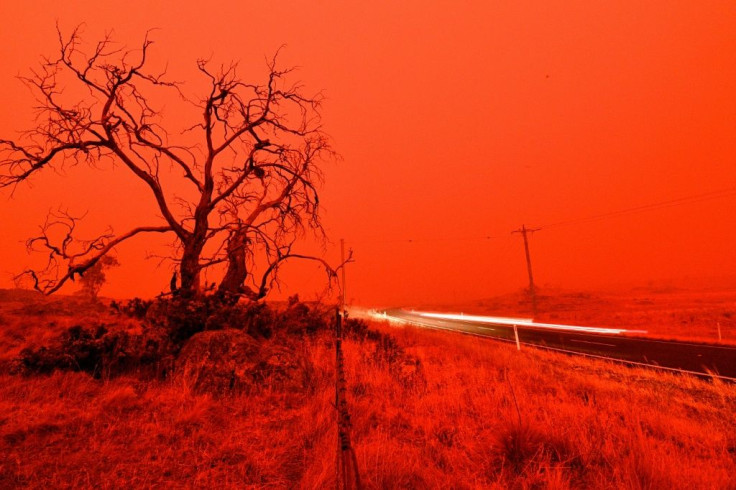Smoke From Australia Fires Forces Emergency Management Office To Shutdown

Canberra, the capital city of Australia, lies in the path of the smoke and ash from wildfires that have burned over 4,000 square miles of land to the city’s north. The resulting poor air quality has forced the Australian federal government to shut down its department responsible for managing emergencies.
On Monday, the city’s Air Quality Index (AQI) measured a whopping 340 on a scale of 500. The AQI is used by governments to communicate to the public on the pollution levels of the air they breathe. A “Good” AQI is 0 to 50. Anything over 300 is considered “Hazardous" and will trigger health warnings of emergency conditions that effect the entire population. The 340 AQI puts Canberra at about twice the level of Beijing's 170 AQI score.
The list of government and other shutdowns include:
- The Department of Home Affairs – CNN affiliate SBS reported that the staff was told to stay away from its Canberra headquarters.
- The Department of Health told staff not to work out of one of its locations.
- YWCA Canberra, which operates some childcare centers, opted to close all its children's services in the Australian Capital Territory and the rural New South Wales town of Murrumbateman on Monday due to "hazardous smoke conditions." They posted a statement on Facebook that read, "This is to ensure the health and well-being of our staff and the children in our services.”
- Canberra's National Gallery of Australia closed Monday due to the smoke. Its website said, "Closing our doors allows us to mitigate any risk to the public, staff and works of art on display.”
There was a morsel of good news in other areas of New South Wales (NSW) as cooler weather and rain allowed some firefighters to take a break. Shane Fitzsimmons, commissioner of the New South Wales Rural Fire Service (NSWRFS), said, "It's a psychological relief if nothing else.” He commented that the rains weren't helping with back burning, a method of controlled burning that helps limit the spread of wildfires.
Any rainfall is welcome but according to NSWRFS spokesman James Morris, weeks of consistent showers are needed to ease the fire threat. He said, "We've seen drought conditions, so the ground is very hard. If we get a lot of rain in a short period of time, it'll sit on the surface and run away.”
On Sunday, Prime Minister Scott Morrison made a somber prediction that for some states, the most difficult fire seasons would be later in January and February. "The crisis is not over," he said. "There are months to go."
There are still over 160 active bushfires in NSW and Victoria. As many as 24 people have died as a result of the fires and if the estimates of burned land are accurate, then an area twice the size of Belgium has been lost to the fires and converted to a Mars-like landscape.
© Copyright IBTimes 2025. All rights reserved.




















